
The Pholcidae are a family of araneomorph spiders. The family contains over 1,800 pholcids, including those commonly known as the marbled cellar spider , daddy long-legs spider, granddaddy long-legs spider, carpenter spider, daddy long-legger, vibrating spider, gyrating spider, long daddy, and skull spider. The family, first described by Carl Ludwig Koch in 1850, is divided into 94 genera.

Dwarf sheet spiders (Hahniidae) is a family of araneomorph spiders, first described by Philipp Bertkau in 1878. Their bodies are about 2 millimetres (0.079 in) long, and they build extremely delicate webs in the form of a sheet. Unlike many spiders the web does not lead to a retreat. The silk used in these webs is so fine that they are difficult to spot unless they are coated with dew. They greatly favor locations near water or near moss, and are often found in leaf litter and detritus or on the leaves of shrubs and trees.

Ant mimicry or myrmecomorphy is mimicry of ants by other organisms. Ants are abundant all over the world, and potential predators that rely on vision to identify their prey, such as birds and wasps, normally avoid them, because they are either unpalatable or aggressive. Spiders are the most common ant mimics. Additionally, some arthropods mimic ants to escape predation, while others mimic ants anatomically and behaviourally to hunt ants in aggressive mimicry. Ant mimicry has existed almost as long as ants themselves, the earliest ant mimics in the fossil record appear in the mid Cretaceous alongside the earliest ants. Indeed one of the earliest, Burmomyra was initially classified as an ant.
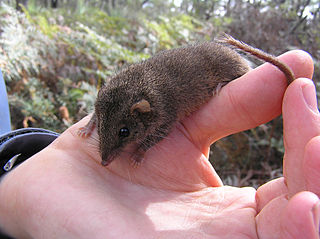
The agile antechinus is a species of small carnivorous marsupial of the family Dasyuridae. It is found in Australia.
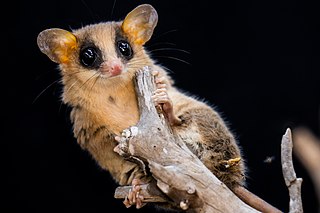
Gracilinanus is a genus of opossum in the family Didelphidae. It was separated from the genus Marmosa in 1989, and has since had the genera Cryptonanus, Chacodelphys, and Hyladelphys removed from it.

The agile mangabey is an Old World monkey of the white-eyelid mangabey group found in swampy forests of Central Africa in Equatorial Guinea, Cameroon, Gabon, Central African Republic, Republic of Congo, and DR Congo. Until 1978, it was considered a subspecies of the Tana River mangabey. More recently, the golden-bellied mangabey has been considered a separate species instead of a subspecies of the agile mangabey.
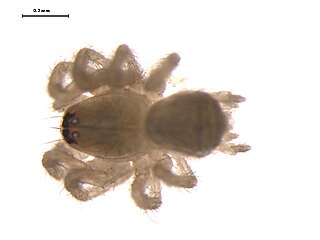
Neoantistea is a genus of dwarf sheet spiders that was first described by Willis J. Gertsch in 1934.
Voraptipus is a monotypic genus of Mozambican nursery web spiders containing the single species, Voraptipus agilis. It was first described by Carl Friedrich Roewer in 1955, and is only found in Mozambique.
Caddo agilis is a species of harvestman in the family Caddidae. It is found in North America.
Tupiocoris agilis is a species of plant bug in the family Miridae. It is found in North America.

Melissodes agilis, the agile long-horned bee, is a species of long-horned bee in the family Apidae. It is found in Central America and North America.
Laccobius agilis is a species of water scavenger beetle in the family Hydrophilidae. It is found in North America.

Neoantistea magna is a species of true spider in the family Hahniidae. It is found in the United States and Canada.

Habronattus agilis is a species of jumping spider in the family Salticidae. It is found in the United States.
Neoantistea riparia is a species of true spider in the family Hahniidae. It is found in the United States.
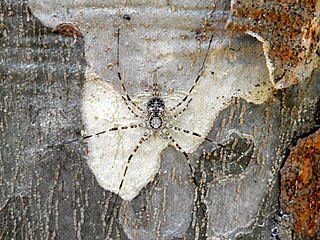
Neotama mexicana, also known as the long-spinneret spider or Mexican two-tailed spider, is a species of tree trunk spider in the family Hersiliidae. It is found in a range from the United States to Peru and Guyana.
Caddo pepperella is a species of harvestman in the family Caddidae. It is found in North America.
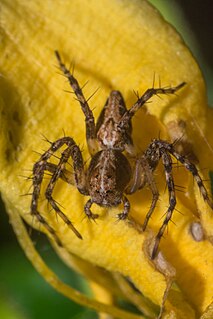
Oxyopes scalaris, the western lynx spider, is a species of lynx spider in the family Oxyopidae. It is found in North America.
Xenoctenidae is a family of araneomorph spiders separated from Miturgidae in 2017.












